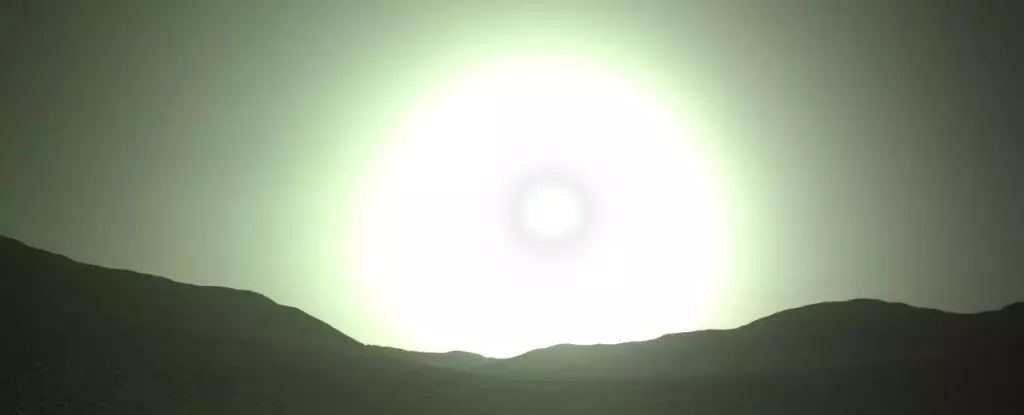On July 4, 2023, the Perseverance Rover celebrated its 842nd Martian day on Mars. As the red sky above began to grow dark, the adventurous robot turned its left navigation camera to the hazy horizon. With one snap, it captured a spectacularly alien sunset, around which the red planet’s sky glowed a brilliantly strange cool blue. This otherworldly sight is quite unlike anything we would witness here on Earth. The stark differences in Mars’ atmosphere, distance from the Sun, and the composition of its air all contribute to the mesmerizing phenomenon that is a Martian sunset.
A Tale of Distance and Atmosphere
Mars, being further from the Sun than Earth, receives significantly less sunlight. At most, the red planet receives less than half of the powerful sunlight that blesses our home planet. Further adding to the distinction is the fact that Mars has a mere 1% of the atmosphere that Earth possesses. The Martian atmosphere predominantly consists of carbon dioxide, with only trace amounts of nitrogen and oxygen. These variations result in sunlight interacting differently with the atmosphere of each planet.
When sunlight enters Earth’s atmosphere, it encounters oxygen, nitrogen, and other particles that scatter blue light in different directions. This scattering is responsible for the blue appearance of our skies during the day. As the Sun rises or sets, its light must penetrate more atmosphere. Consequently, the longer wavelengths, such as blue and violet, get filtered out, leaving behind shades of orange and red for us to witness.
On the contrary, Mars’ atmosphere primarily comprises iron-rich dust. When sunlight interacts with this fine dust suspended in the air, it scatters red light across the sky during the day. However, at twilight, the red light is sifted away, giving rise to a captivating cool blue hue amidst the dusty haze. The unique Martian atmosphere allows blue light to penetrate and scatter more effectively, resulting in its distinct coloration.
The Martian twilight offers a unique opportunity for scientific observation and study. During this time, sunlight continues to illuminate the high-altitude dust particles, creating a bluish haze that can persist for hours after sunset or sunrise. This atmospheric phenomenon presents a favorable environment for capturing detailed images of dust and clouds against a dark backdrop. Scientists can utilize these images to examine the composition of Mars’ atmosphere, aiding in the identification of dust and ice clouds more efficiently.
Earlier this year, the Curiosity rover captured an unprecedented image of the Sun’s rays piercing through the twilit clouds of the Martian sky. By analyzing the color transitions within these visuals, researchers gain insights into particle size variations within the clouds. This information provides valuable knowledge about the evolution and changing size of the particles over time.
A Celestial Show That Keeps Inspiring
For close to two decades, rovers like Curiosity, Perseverance, Spirit, and Opportunity have been instrumental in capturing the spellbinding Martian sunsets. Each snapshot adds to our ever-growing collection of these awe-inspiring images, reminding us of the boundless beauty that exists beyond our home planet. Despite the accumulation of numerous photographs, the magnificent allure of a Martian sunset remains undiminished.
The distinctiveness of Mars’ sunsets arises from a combination of factors, including the planet’s distance from the Sun, the composition of its atmosphere, and the interactions between sunlight and iron-rich dust suspended in the air. These alien sunsets paint the Martian sky in surreal shades of blue and offer scientists invaluable opportunities to investigate the intricacies of the Red Planet’s atmospheric conditions. As we continue to explore Mars, these breathtaking sunsets serve as a constant reminder of the wonders that exist beyond the confines of Earth.



Leave a Reply